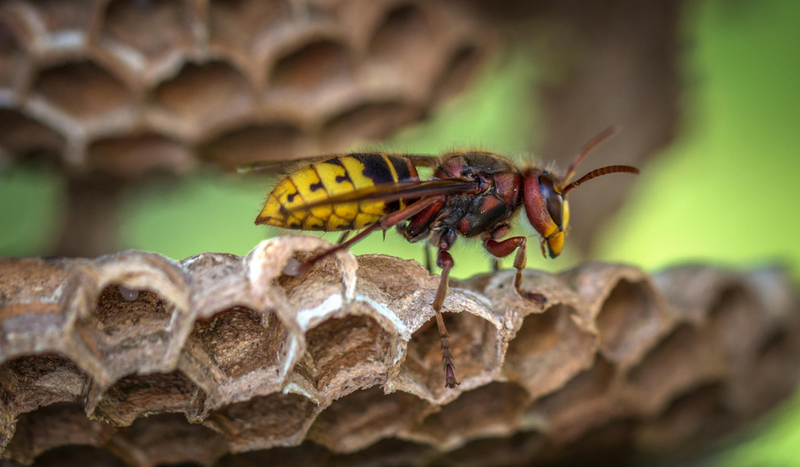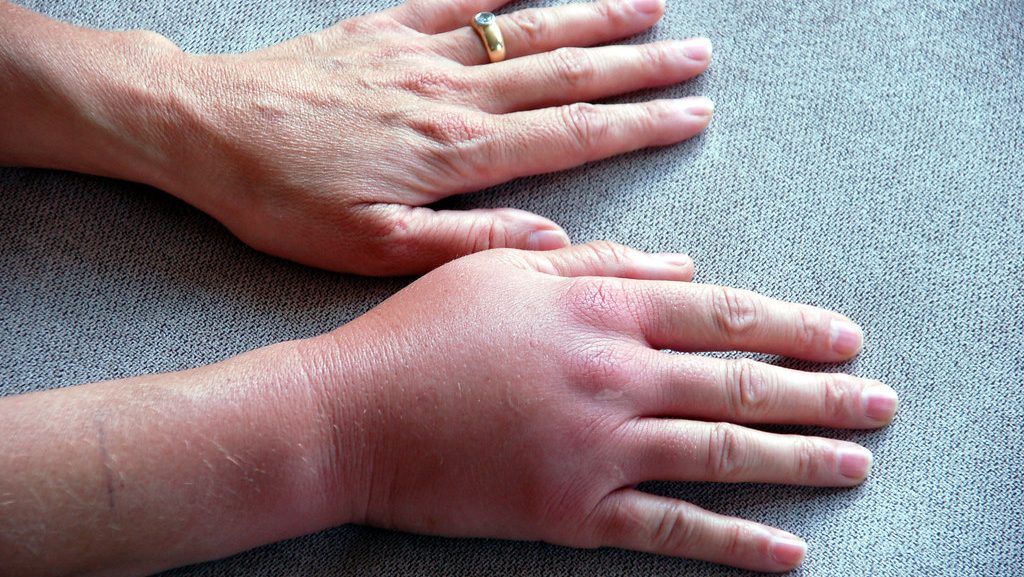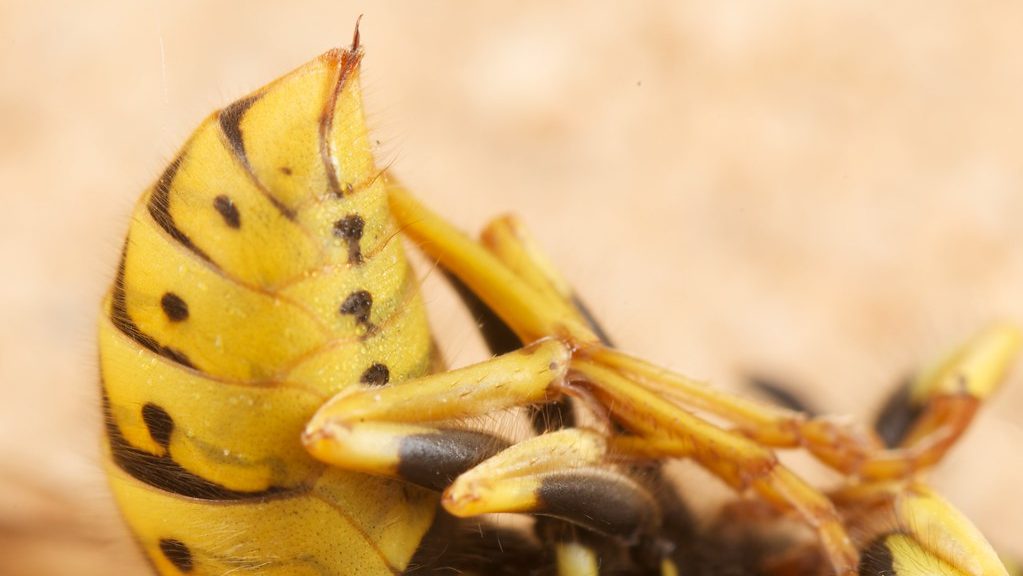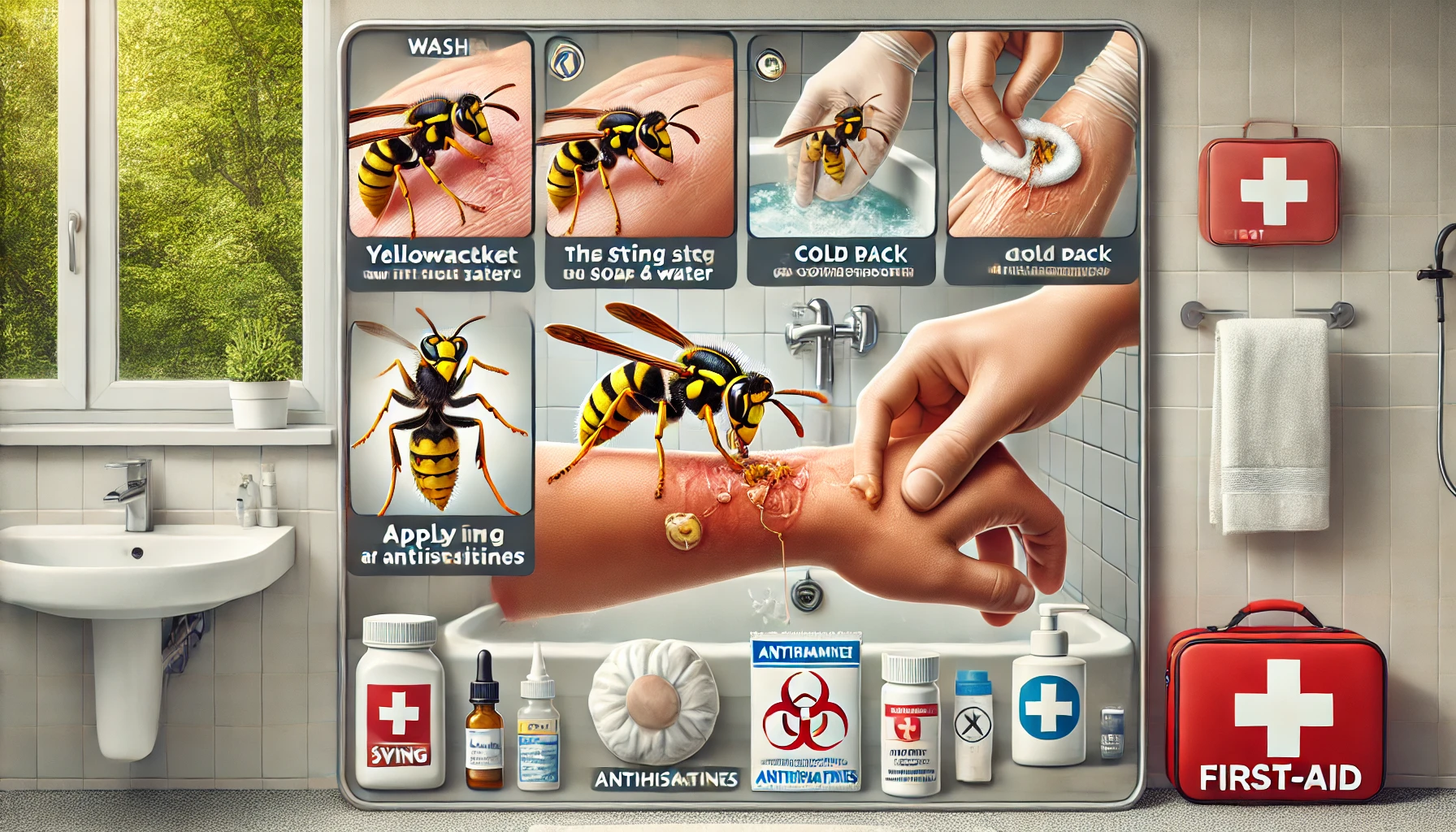Key Takeaways
-
Yellow jacket stings usually cause pain, redness, and swelling.
-
Anaphylaxis is a severe allergic reaction needing emergency help.
-
Large swelling may be uncomfortable but rarely dangerous.
-
Watch for infection signs like redness, pus, or fever.
-
Use ice, antihistamines, and pain relievers for relief.
 Yellow jackets are known for being aggressive, and their stings can be painful and alarming. While many yellow jacket stings cause mild discomfort and resolve on their own, some stings can lead to more serious health concerns. Knowing when to be concerned about a yellow jacket sting, understanding the associated health risks, and recognizing key signs of complications can help you take the right action if you or someone else is stung.
Yellow jackets are known for being aggressive, and their stings can be painful and alarming. While many yellow jacket stings cause mild discomfort and resolve on their own, some stings can lead to more serious health concerns. Knowing when to be concerned about a yellow jacket sting, understanding the associated health risks, and recognizing key signs of complications can help you take the right action if you or someone else is stung.
Understanding Yellow Jacket Stings
Yellow jackets can sting multiple times, unlike honeybees, which die after one sting. When they sting, they inject venom into the skin. The venom has proteins that affect skin cells and the immune system, leading to an inflammatory response. In most cases, this reaction is localized and resolves without serious complications, but a yellow jacket sting can cause more severe reactions for some people.

Not getting a solution?
Get your free pest control estimate today!Common Reactions to Yellow Jacket Stings
For most people, a yellow jacket sting will cause pain, redness, and slight swelling around the sting site. The area may feel warm, and itching or tenderness is common as the sting heals. Depending on the individual’s sensitivity to the venom, these symptoms typically last a few hours to a few days. Applying ice to the sting site, taking over-the-counter pain relievers, and using antihistamines to reduce itching can help ease the discomfort. For most people, these remedies are sufficient, and there is no need for medical intervention. However, there are times when a sting may require more attention.When to Be Concerned About Yellow Jacket Sting
Sometimes, a yellow jacket sting can lead to more serious symptoms. If you or someone you know experiences any of the following signs after a yellow jacket sting, it’s essential to seek help: 1. Allergic Reactions (Anaphylaxis) A severe allergic reaction known as anaphylaxis is the most dangerous complication of a yellow jacket sting. People allergic to yellow jacket venom might experience symptoms such as trouble breathing, swelling, dizziness, rapid pulse, or a sudden drop in blood pressure. Anyone experiencing these symptoms should receive emergency medical care immediately. Individuals who know they are allergic to yellow jacket stings should always carry an epinephrine auto-injector (EpiPen) and use it at the first sign of an allergic reaction. Anaphylaxis requires treatment with epinephrine, followed by further medical care at a hospital. 2. Large Local Reactions Some people experience what is known as a large local reaction, which involves extreme swelling around the sting site. The swelling may extend beyond the immediate area and persist for several days. Although large local reactions are not typically life-threatening, especially if the swelling interferes with movement or affects areas like the face or neck, it’s advisable to consult a doctor if it continues to increase or shows no sign of improvement after a few days. 3. Signs of Infection In rare cases, the sting site may become infected. Signs of infection include increased redness, warmth, pus, and worsening pain several days after the sting. If the area around the sting appears to be getting worse rather than better, or if you develop a fever, these could be signs of a bacterial infection. A healthcare provider can determine whether antibiotics are needed to treat the infection.
Yellow Jacket Sting Health Risks
The main health risks associated with yellow jacket stings are allergic reactions, including anaphylaxis and infections. For people who are allergic, even a single sting can be life-threatening. In these cases, the body’s immune system overreacts to the venom, releasing chemicals. The risk is generally low for individuals who are not allergic, but multiple stings can still pose a danger. When stung repeatedly, the venom can accumulate, leading to more extreme symptoms like nausea, vomiting, dizziness, or fainting. This can be worrisome for children, the elderly, or individuals with weakened immune systems. Additionally, stings near sensitive areas such as the eyes, mouth, or throat should be monitored closely. Swelling in these areas can obstruct airways, leading to breathing difficulties even in individuals without known allergies.





